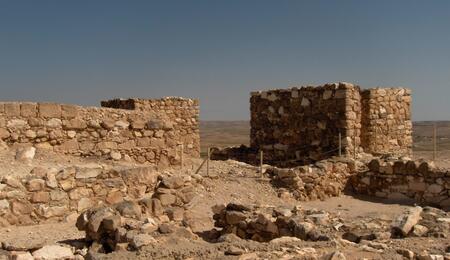Archaeologists discover Iron Age cannabis at temple in Israel

.
Archaeologists have found cannabis used in rituals over 2,500 years ago in a temple in Israel. It is the first time that physical evidence attests to the presence of cannabis during the Iron Age in the Middle East.Last year, archeologists discovered cannabis in Gallic tombs in a village around Clermont Ferrand in France. This year's top archeological discovery is older and makes for compelling proof that ever since ancient times cannabis was present in holy Jerusalem, too. The results of the archeological excavations were published in the journal of the Tel Aviv University Institute of Archeology on May 28. Charred cannabis was found in a temple dating from the era of the kingdom of Judah which stretched from 930 to 586 BC. Frankincense and cannabis were found on the materials that made up the two altars of this temple. "Two limestone monoliths, interpreted as altars, were found in the Judahite shrine at Tel Arad. Unidentified dark material preserved on their upper surfaces was submitted for organic residue analysis at two unrelated laboratories that used similar established extraction methods. On the smaller altar, residues of cannabinoids such as Δ9-teterahydrocannabinol (THC), cannabidiol (CBD) and cannabinol (CBN) were detected, along with an assortment of terpenes and terpenoids, suggesting that cannabis inflorescences had been burnt on it," reads the study abstract. As organic residues linked with animal dung were also discovered at the excavation site, the archeologists suggest the cannabis resin was stirred with dung to allow mild heating. The site findings shed new light on how the Arad altars were used back in the 8th century BC as well as what incense offering looked like in Judah during the Iron Age, write the archeologists.
The temple is located in Tel Arad, a few dozen kilometers south of Jerusalem. The two limestone altars from the temple have been known to scientists for a few decades now, as well as they were aware of the intriguing black deposits. Only now they were able to confirm one of the altars indeed contained a psychoactive substance. "At the present time, we have no information on how this cannabis arrived in Tel Arad or in Judea in particular," reportedly said Eran Arie, curator at the Israel Museum, specializing in the Iron Age and the Persian period. Cannabis could have been used for its psychoactive effects during a ritual of the cult of Judah, the researchers say. It's assumed the ritual was performed among the wealthier of society. "If they only wanted the smell of cannabis, they could have burned sage," explains Eran Arie. The region where the shrine is located does not have cannabis pollen or seed, therefore the cannabis was probably imported via foreign trade routes of the day. It likely arrived in Judea in the form of hash and was eventually burned atop dried animal dung on the Tel Arad limestone altar. The finding suggests that the official state religion of the Judah kingdom was using the cannabis substance, according to Arie. Eventually, it could point to how worship was conducted in the biblical Temple in Jerusalem. There is so much more to learn about cannabis culture, however. The latest finding from Israel only confirms that there is a load of unknown information about how cannabis was used in the past. Apparently all the way back to Jesus and even before him. Cover photo: Photo from the archeological site of Tel Arad in Israel, Photo credit: Acer11, CC BY-SA 3.0Cannabis residue found in ancient Jewish temple links hallucinogens with religion https://t.co/F6KzwGCpAQ
— The Guardian (@guardian) June 2, 2020
S
Soft Secrets



